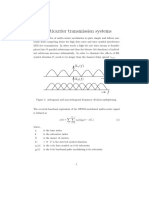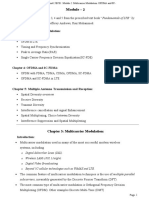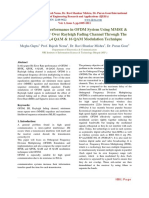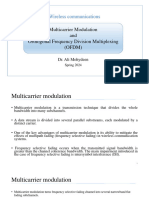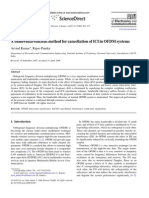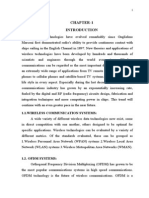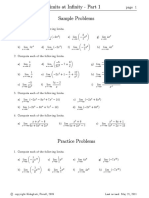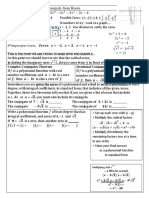0% found this document useful (0 votes)
47 views27 pagesAdvanced Multicarrier Modulation Techniques
This document discusses techniques to mitigate subcarrier fading in multicarrier modulation systems, including coding with interleaving over time and frequency, frequency equalization, precoding, and adaptive loading. These techniques compensate for flat fading effects on individual subcarriers to improve performance.
Uploaded by
u2001170Copyright
© © All Rights Reserved
We take content rights seriously. If you suspect this is your content, claim it here.
Available Formats
Download as PDF, TXT or read online on Scribd
0% found this document useful (0 votes)
47 views27 pagesAdvanced Multicarrier Modulation Techniques
This document discusses techniques to mitigate subcarrier fading in multicarrier modulation systems, including coding with interleaving over time and frequency, frequency equalization, precoding, and adaptive loading. These techniques compensate for flat fading effects on individual subcarriers to improve performance.
Uploaded by
u2001170Copyright
© © All Rights Reserved
We take content rights seriously. If you suspect this is your content, claim it here.
Available Formats
Download as PDF, TXT or read online on Scribd
/ 27



